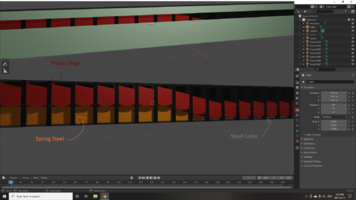Good stuff.
Thanks!
I don't know these pumps but yours is looking good.
I don't know them either, as said earlier here in the UK ours are generally green metal or plastic ones.
It was only while searching that I found one tiny image showing a "gasboy" on top of one the larger tanks.
Though this version did raise an interesting bit of "artistic angst".
If someone is modelling real world locations, how "screen accurate" should it be?
It's a question that railway modellers face all the time, because model railways tend to be big.
Even a simple oval of track requires something the size of a door.
So they tend to reduce distances to make everything fit, but that creates a problem called "compression".
For example say there's 7 identical and 2 visually unique railside cabinets within 100 yards on the real thing.
On a compressed model those cabinets could be squashed together and that might not look right.
It's also problematic if that layout will be photographed, even if the photographer focus stacks their images.
Hence the modeller might only put 2 identical cabinets on their layout.
Obviously that's less of an issue for virtual 3D modellers, our "layouts" can be as big or small as we wish.
Nor do we have to be overly concerned with camera focal lengths, because we have the luxury of being able to place cameras anywhere.
But I think we still need to consider things such as composition and factors such as modelling time.
So in essence, both real world and virtual modellers are creating a "flavour" of the location.
Which is what I'm hoping to do here.
So then we're back to should extra objects be included, even if they look cool.
And that's where I struggle with this version of the tank.
So I've decided to include it as a bonus version.
The dials must have been a pain.
Fortunately not.
On some of my other models, especially ones with cockpits, I've learned to create recesses for the dial faces, then place "glass" over the top.
This way you can use larger maps/textures for each of the dial faces, rather than try to squeeze everything into a single map.
Making it look better on close ups.
The image below shows what I mean and also how someone could model something like this with actual working dials.
Which is based literally on how mechanical dials work.
Or as some folks may recall, it was how speedometers could be "clocked"




